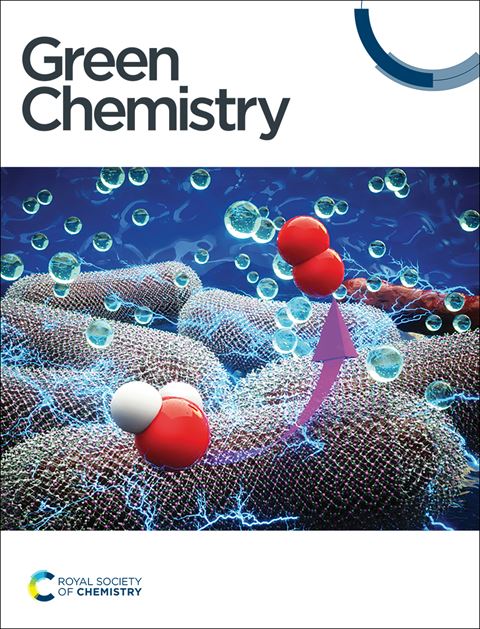推进绿色化学绩效评估:雅诗兰黛公司不断迈向有意义的透明度†
IF 9.2
1区 化学
Q1 CHEMISTRY, MULTIDISCIPLINARY
引用次数: 0
摘要
绿色化学可以作为指导化妆品配方决策的关键框架,这一点通过estee Lauder公司(ELC)“绿色评分”评估工具的开发和在整个投资组合范围内的实施得到了证明。监管、行业报告和更广泛的文献来源在数据质量和可用性方面的最新进展,为改进和完善该框架的潜在科学稳健性提供了机会。因此,描述了第一个重要的方法迭代。通过纳入废物影响指标和精炼温室气体和原料采购指标方法,环境影响支柱得到了极大的加强。生物可降解性端点的添加也建立在工具初始持久性评估的基础上。通过成分选择案例研究,增强的工具能够提供更准确的配方指导,并加强绿色评分作为前瞻性产品设计指南和知情替代工具的效用。还讨论了利用化妆品和化学品监管环境的快速发展来促进框架进一步优化和完善的潜在机会。报告还强调了绿色评分在促进企业供应链网络追求有意义的透明度和经验数据共享方面的适用性。本文章由计算机程序翻译,如有差异,请以英文原文为准。

Advancing green chemistry performance assessment: the Estée Lauder Companies’ continuing journey towards meaningful transparency†
Green chemistry can serve as a key framework to guide cosmetic formulation decision making, as evidenced through the development and portfolio-wide implementation of the Estée Lauder Companies’ (ELC) “Green Score” assessment tool. Recent advancements in data quality and availability from regulatory, industry reporting, and wider literature sources have provided the opportunity to improve and refine the underlying scientific robustness of the framework. Consequently, the first significant methodological iteration is described. The environmental impact pillar is greatly strengthened through inclusion of a waste impact metric and refined greenhouse gas and feedstock sourcing metric approaches. The addition of a biodegradability endpoint also builds upon the tool's initial persistence assessment. Exemplified through ingredient selection case studies, the enhanced tool enables provision of more accurate formulation guidance and strengthens the Green Score's utility as a forward-looking product design guide and informed substitution tool. Potential opportunities for leveraging the rapid evolution of the cosmetic and chemical regulatory landscape to facilitate further optimization and refinement of the framework are also discussed. The applicability of the Green Score to catalyze progress in the pursuit of meaningful transparency and empirical data sharing across enterprise supply chain networks is also highlighted.
求助全文
通过发布文献求助,成功后即可免费获取论文全文。
去求助
来源期刊

Green Chemistry
化学-化学综合
CiteScore
16.10
自引率
7.10%
发文量
677
审稿时长
1.4 months
期刊介绍:
Green Chemistry is a journal that provides a unique forum for the publication of innovative research on the development of alternative green and sustainable technologies. The scope of Green Chemistry is based on the definition proposed by Anastas and Warner (Green Chemistry: Theory and Practice, P T Anastas and J C Warner, Oxford University Press, Oxford, 1998), which defines green chemistry as the utilisation of a set of principles that reduces or eliminates the use or generation of hazardous substances in the design, manufacture and application of chemical products. Green Chemistry aims to reduce the environmental impact of the chemical enterprise by developing a technology base that is inherently non-toxic to living things and the environment. The journal welcomes submissions on all aspects of research relating to this endeavor and publishes original and significant cutting-edge research that is likely to be of wide general appeal. For a work to be published, it must present a significant advance in green chemistry, including a comparison with existing methods and a demonstration of advantages over those methods.
 求助内容:
求助内容: 应助结果提醒方式:
应助结果提醒方式:


